Climate changes and extreme weather conditions often make us uncomfortable, even in our homes. Imagine you want to drink your morning coffee but can’t stand out of your bed because of the too-hot or too-cold climate. That’s why you need heating and cooling systems.
This guide will tell you precisely what heating and cooling systems are, how they work and why it’s crucial for the proper functioning of your home to have them installed.
Cooling and Heating Systems
Heating and cooling systems are complex devices you can use to regulate the temperature in buildings.
As the weather changes, you might need to find ways to stay warm or cool; these systems can ensure you are comfortable regardless of the outside conditions.

White air conditioning and a stream of fresh cold air
How Do Heating and Cooling Systems Operate
Heating and cooling systems transfer heat from one area to another through various mechanical processes.
Heating systems heat homes by burning fuels, such as oil or natural gas, to produce warmth. While cooling systems remove heat from indoor air to make it cooler.
Think about it as a heat exchanger process, where one area gives up heat, and another receives it.
There are three basic space heating and cooling systems components: the source, distribution, and control.
The source is responsible for generating or removing the heat from the atmosphere in the building.
The distribution system delivers the heat to where it’s needed, and a control system ensures that the temperature is at the proper range.
While these systems may seem simple in principle, they are complex and require regular maintenance. Working with a qualified professional is essential if you’re considering installing a heating or cooling system in your home.
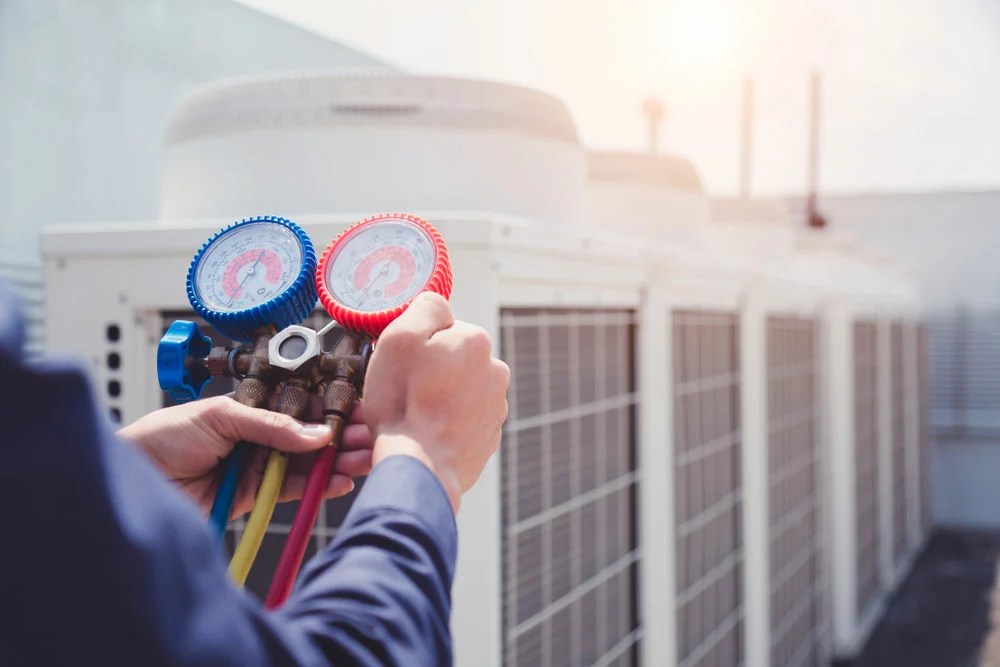
A technician is checking the air conditioner
Types of Heating and Cooling Systems
Furnace & Air Conditioner
Most homes in North America have a furnace and air conditioner system, which combines heating and cooling functions into one unit.
These systems work by circulating hot or cool air throughout the house using ducts typically made from metal or fiberglass.
Furnaces usually run on natural gas, while air conditioners use electricity to cool the indoor air.
Heat Pump
A heat pump is a type of HVAC system that uses the principles of refrigeration to help heat or cool a building.
People use these systems in moderate climates where temperatures do not fluctuate too much, as they can struggle to work effectively at very low or high temperatures.
This type of heat pump uses electricity to move heat from one area to another, which can be much more efficient than simply heating or cooling the room directly.
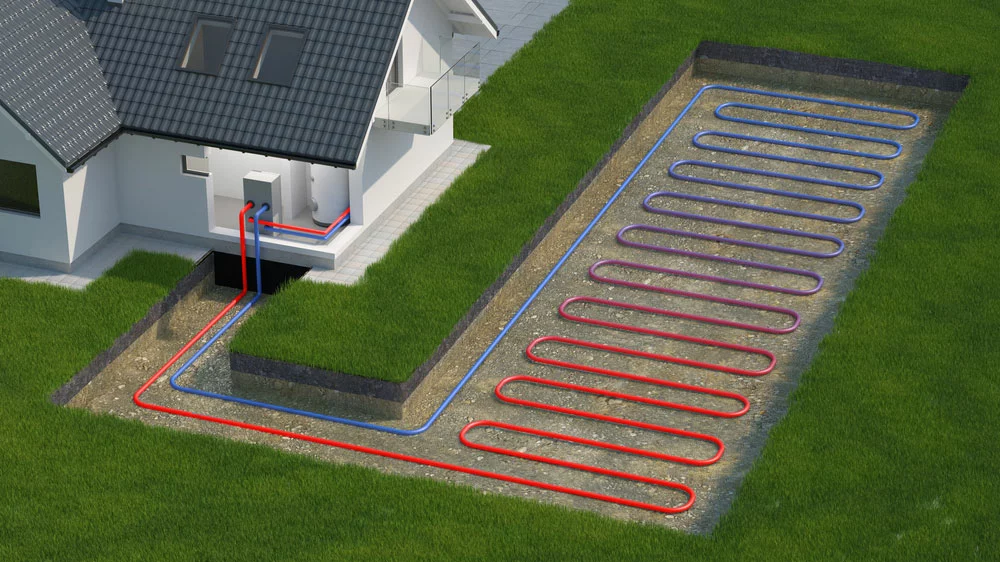
A ground heat pump
Furnace & Heat Pump
The heat pump helps regulate your home’s temperature during mild weather. At the same time, when the temperature drops below freezing, the gas furnace also supplies extra heat.
We call this system a hybrid or dual-fuel heating system because it uses a heat pump and a furnace to manage the indoor climate.
Combining the two types of heating allows you to maintain an adequate temperature in your home while keeping your energy bills low.
Ductless Mini-Split Systems
Mini-split systems distribute heated or cooled air to numerous rooms using a tiny indoor device. This device contains heating and cooling components and a network of tubes or wires.
Unlike traditional heating and cooling systems, which need large ductwork to circulate the air, mini-split systems are often used in homes with limited space.
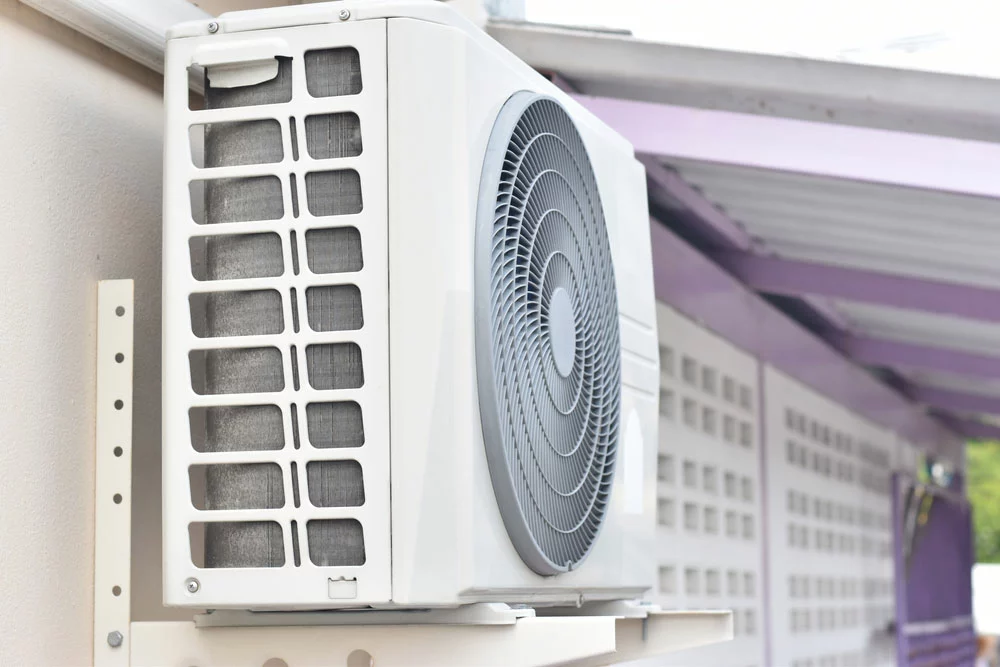
Air conditioner condenser, ductless mini-splits
Boiler & Central Air Conditioner/Ductless Mini – Split
Though not as popular in the United States, boilers are still a heating option worth considering.
Boilers provide hot water or steam to radiators, baseboard heaters, radiant flooring systems, or other methods of heat transfer.
Most people choose gas or oil fuel for their boilers because electricity is much more expensive.
It is common to use a central air conditioning system with boilers, depending on whether your home has existing ductwork.
Geothermal Heat Pump
Geothermal systems use ground temperature to help regulate the temperature in your home. This system works by drawing water or antifreeze from underground, where the temperature remains relatively stable throughout the year.
The water or antifreeze is then circulated through a series of pipes or coils inside your home, heating or cooling the air as needed.
Because of the stable temperature underground, a geothermal heat pump can be a very efficient and cost-effective way to heat or cool your home.
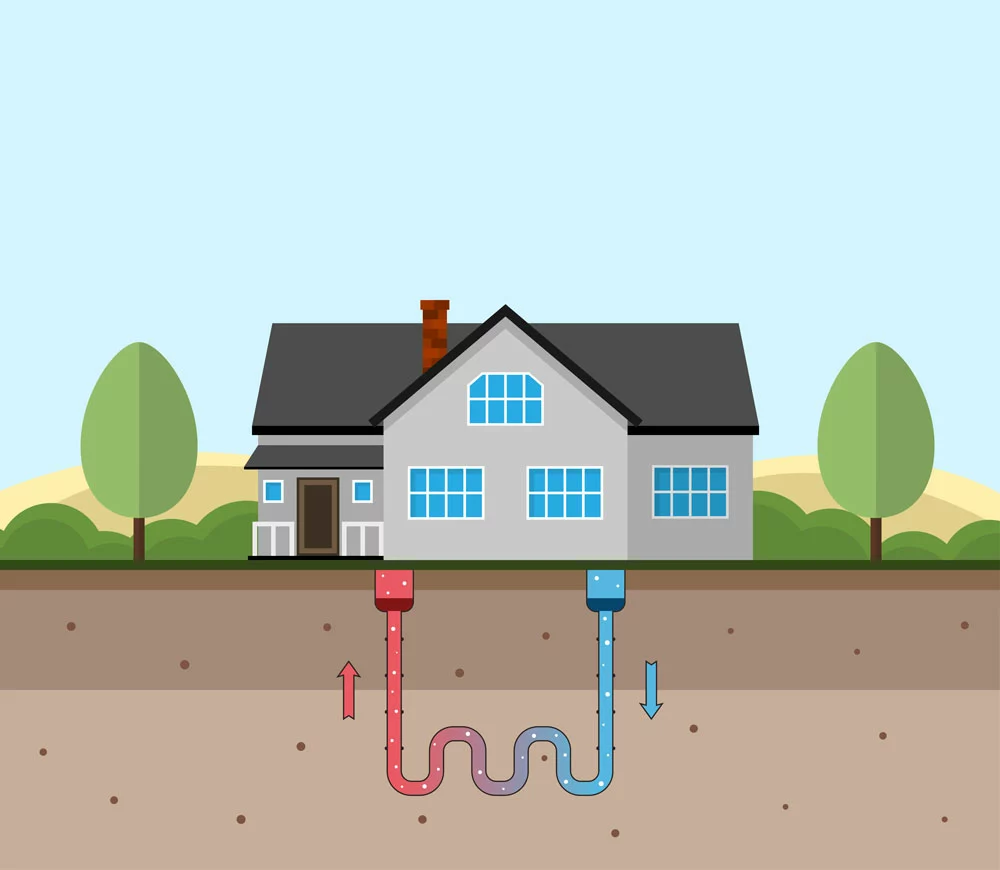
Geothermal green energy concept
How Much Does a New Heating and Cooling System Cost?
The energy cost of a new heating and cooling system can vary significantly depending on the type of system you choose, as well as other factors such as labor costs and the size of your home.
On average, you can expect to pay anywhere from $5000 to $12,000 for a new heating and cooling system, though this price will likely be higher if you need to replace your ductwork or install new vents.
Furnace System Cost
A furnace is a system that heats the air in your home and distributes it using vents or ducts. Furnaces use British Thermal Units (BTUs) to measure heat output, and you can typically expect to pay between $3000 and $6000 for a new furnace.
Here is a list of the most common furnace sizes, along with their corresponding BTU ratings and approximate costs:
- 40,000 – 60,000 BTUs $3,250
- 75,000 – 100,000 BTUs $4,200
- 120,000 – 140,000 BTUs $6,000
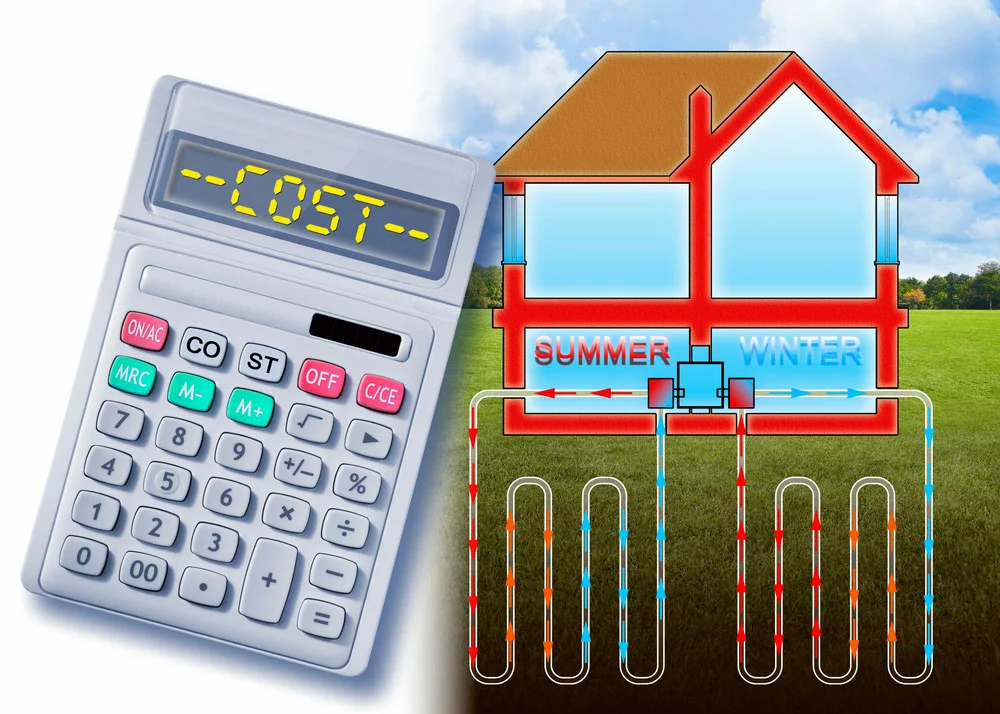
Costs for the installation of a geothermal system
AC Unit Cost
An AC unit comes in tons, and the cost of your unit depends on the number of units you need for your home. You may need 2 units for your home. Others may need 4 or more.
On average, you can expect to pay between $2000 and $5000 for an AC unit. Here is a list of the most common type of AC units sizes, along with their approximate costs:
- 2-ton $2,250
- 3-ton $3,000
- 4-ton $4,250
- 5-ton $5,500
Factors that Influence HVAC Systems Cost
New Ductwork
For ductless system homes that do not have existing ductwork, you will likely have to pay for new ductwork when installing a new heating or cooling system.
Depending on the size and complexity of your home, a new ductwork installation costs $15 per linear foot.
Labor Costs and Fees
In addition to the cost of the new system itself, you will also need to pay for the installation labor.
Costs may vary depending on your location and the type of heating or cooling system you buy. On average, installation fees are around $1,500.
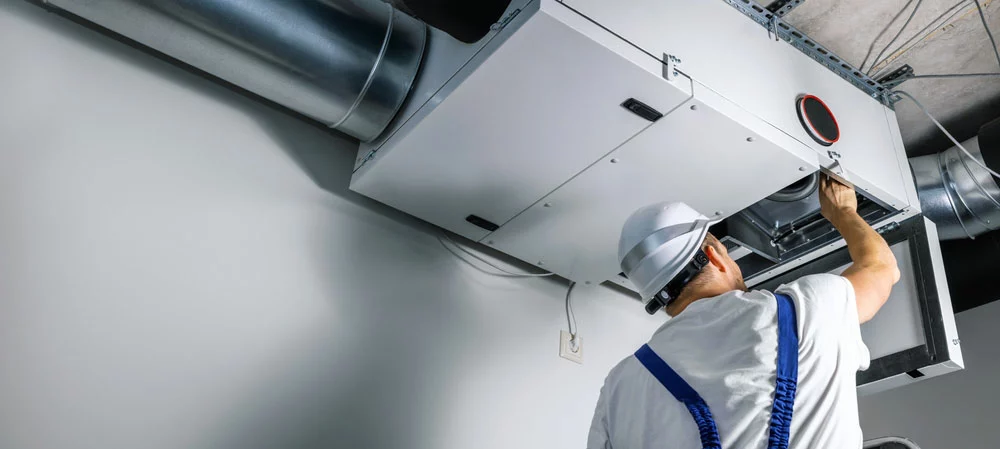
HVAC engineer install a heat recovery ventilation system
Insulation and Duct Sealing
It is crucial to consider integrating insulation and duct sealing to guarantee that your new heating and cooling system’s energy efficiency is high. On average, these services cost around $1,500.
Brand and Type of System
The type and brand of system you choose will also impact the overall operating cost of your new central heating or cooling system.
Premium systems can be significantly more expensive than budget options, so it is essential to carefully consider your options before making a purchase.
On average, homeowners can expect to pay around $5000 for a new HVAC system.
Where the Unit Is (Outside)
If you opt for outdoor units, you may need to pay additional fees for the installation. These costs can vary depending on the size and complexity of the unit.
To get an accurate estimate of the cost of a new HVAC system in your area, consulting with a qualified contractor or HVAC professional is essential.
They will assess your home and provide you with an accurate quote for the cost of your new system.
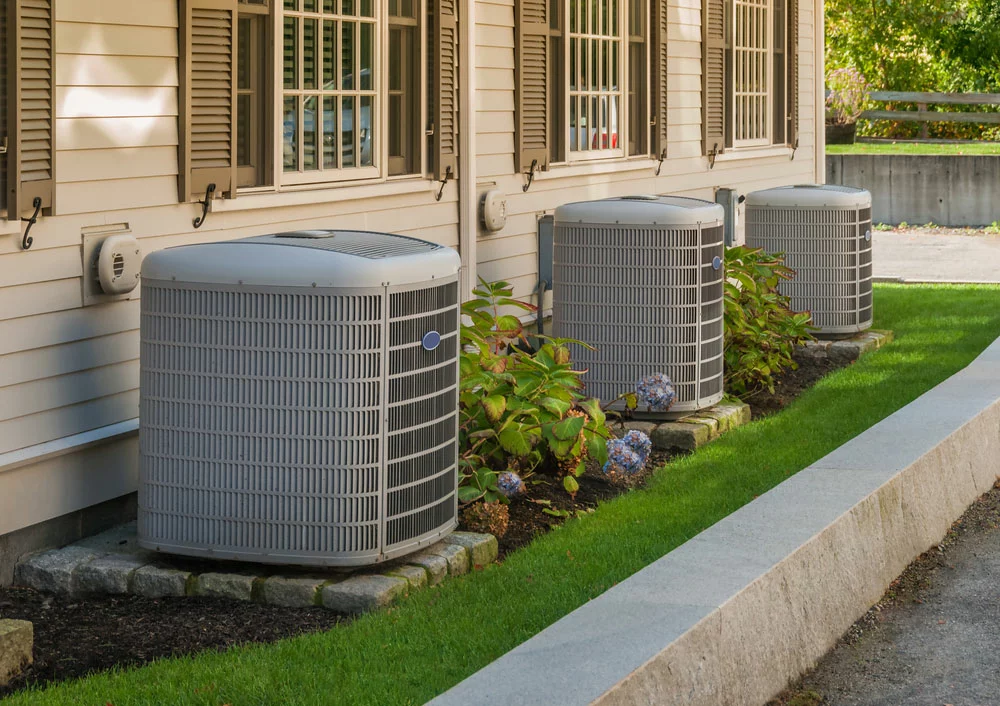
HVAC Outside
Where the Unit Is (Inside)
The location of the unit inside your home is vital to consider. Most indoor units go in places like utility closets or basements.
You will likely have to pay additional fees for wall installation or flooring if you don’t have indoor space. These fees can be around $1,000 to $2,500.
Conclusion
Installing a new HVAC system is a major home renovation project and can be a significant expense.
However, the benefits of having functioning HVAC applications can include reduced utility bills and improved comfort in your home year-round.
Following the tips above, you can find the right system for your home and budget.
